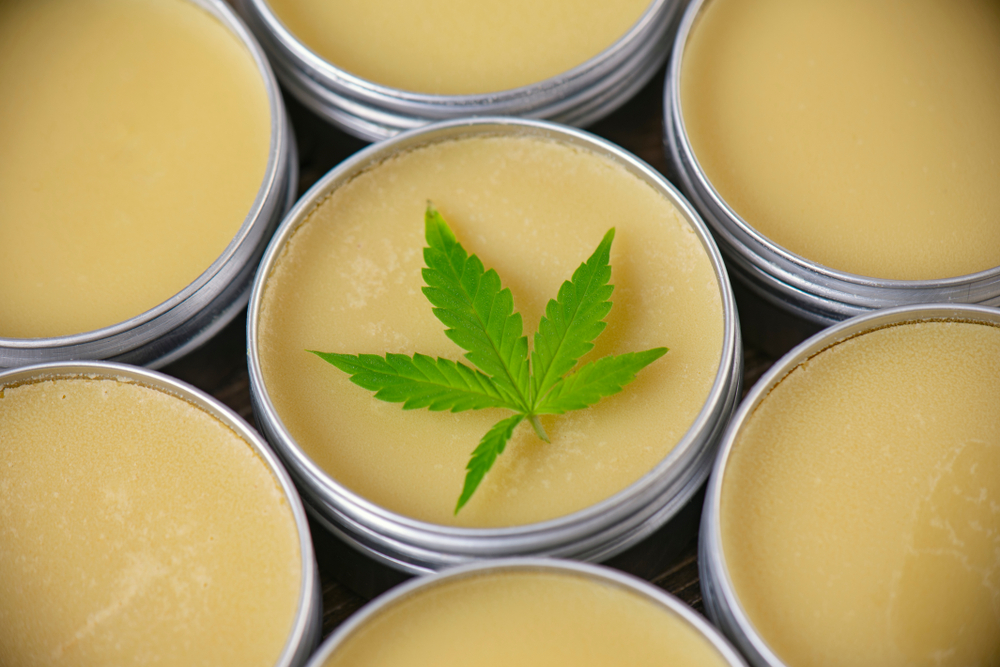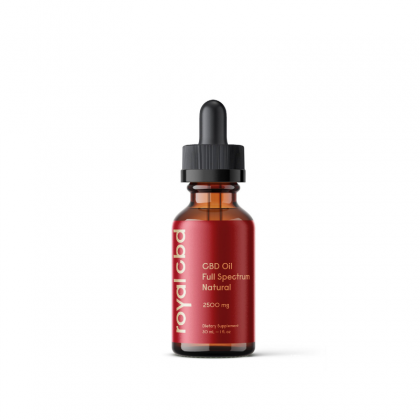| Total CBD: | 500 – 2500 mg |
| Potency: | 16.6 - 83.3 mg/mL |
| Cost per mg CBD: | $0.12 – $0.18 |
| Extract Type: | Full-spectrum |
| THC Content: | <0.3% |

Evidence based
CBD Oil For Inflammation: What The Research Says
Inflammation is at the root of many medical conditions.
CBD oil has an impressive anti-inflammatory profile.
Here’s how it works.
In this article, you’ll learn how CBD can be used to manage a variety of inflammatory disorders.
We’ll cover how this impressive health supplement actually works, what its limitations are, and what to look for in a quality CBD oil for reducing inflammation.
Of all the health benefits of CBD, the effects on inflammation are the most impressive. There are already dozens of high-level clinical studies, and thousands of animal and in vitro studies proving the anti-inflammatory benefits of CBD and other hemp-derived phytochemicals.
Let’s dive straight in with the best CBD oils for inflammation.
Best CBD Products For Inflammation
- Best CBD Oil Overall — Royal CBD Oil
- Best CBD Capsules — Gold Bee CBD Capsules
- Best CBD Oil Formula — Kiara Naturals CBD Pain Relief Tincture
- Best Nano CBD Oil — Phoria CBD Oil Nano Tincture
- Best CBD Oil in Europe — Nordic Oil Full-Spectrum CBD Oil
Summary: Can CBD Help With Inflammation?
There are dozens of chemical messengers and enzymes working together to produce inflammation in the body.
Blocking one pathway may prove useful for certain types of inflammation, but it’s not the most effective method treatment.
CBD is an excellent anti-inflammatory because it works through multiple pathways. By doing this, CBD halts the inflammatory process at several different points in the process.
Compared with common anti-inflammatory drugs such as Aspirin — which inhibits only one enzyme involved in the inflammatory process — we find CBD more effective for combating inflammation.
What Type of CBD Products Should I Use?
CBD comes in all different forms — but not all are appropriate for every condition. When it comes to inflammation specifically, there are a few types of CBD that work better than others.
Let’s cover the main types of CBD you’re likely to find and discuss their advantages and disadvantages for reducing inflammation.
1. CBD Oils & Tinctures
CBD oils are the most common form of CBD that people are using today. They allow for simple, effective dosing, and have a long shelf-life. CBD tinctures are very similar to oils, but use alcohol as the carrier instead of oils. This gives them a longer shelf-life and it makes it easier for herbalists and naturopaths to mix other anti-inflammatory herbs into the formula — however, the taste is unpleasant.
To take CBD oils and tinctures, measure out the intended dose using the supplied dropper and place under the tongue for fast onset of effects, or swallow for a slower onset of effects.
2. CBD Capsules
CBD capsules provide another popular method of consuming CBD. They take away a lot of the guesswork when it comes to dosing and make it easy to take your CBD on the go.
3. CBD Suppositories
CBD suppositories are not popular, but they’re an excellent option for addressing inflammation in the digestive tract by delivering the cannabinoids directly to the problematic site.
4. Topical CBD Products

Any inflammation involving the skin can be relieved by taking CBD internally. However, the best treatment for these conditions is usually topical. This allows the cannabinoids to concentrate effects on the inflamed local tissues.
When to Use Topical CBD:
- Psoriasis
- Eczema
- Allergic dermatitis
- Acne
- Muscle injuries
- Tendonitis
- Skin infections
5. CBD Edibles
Edibles — including gummies, cookies, or cooking oils — also provide useful ways of getting CBD into the body. They taste great without compromising potency. The only downside is that, with the exception of standardized gummies, it can be challenging to gauge the strength of edibles. Eating too many edibles can have other negative long-term side-effects due to the high sugar content.
Therefore, edibles are better for spot treatment rather than a daily source of CBD.
6. CBD E-Liquids and Vape Oils
Vaping CBD is the most efficient of all the dosage forms because bioavailability through the lungs is much higher than it is through the digestive tract.
However, the cost to start vaping can be steep as you’ll need to buy a vaporizer, and the duration of effects tends to be shorter than that of CBD consumed orally.
Vaping is ideal for delivering CBD to the lungs and is, therefore, a good option for lung inflammation. However, it may or may not make conditions such as asthma worse — so always use CBD vape oils with caution.
What’s The Dose of CBD Oil For Inflammation?
When it comes to inflammation, the more CBD, the better. Most of the research on using cannabinoids for inflammation indicates a dose-dependent response. This means that the more you take, the stronger the anti-inflammatory effect it produces.
Therefore, the recommended dose will vary according to the level of inflammation.
For low-grade inflammation — such as early stages of arthritis — a low strength may achieve the results you’re looking for.
To treat severe inflammation — such as inflammatory bowel disease or autoimmune diseases — you may need to opt for a medium or high strength instead.
General Dosage Guidelines for Inflammatory Conditions
| Low-Strength CBD | Moderate-Strength CBD | High-Strength CBD |
| • Early stages of arthritis • Post-viral infection • Low-grade traumatic injury | • Mild allergies • Arthritis • Mild depression | • Multiple sclerosis • Atherosclerosis • Hepatitis • Severe allergies • Moderate depression • Parkinson’s disease |
CBD Dosage Calculator
What Are The Side-Effects of CBD?
Although CBD is proven to be highly safe in terms of toxicity, it’s important to know about the potential side-effects. Everybody is different, and what works in one person doesn’t always work the same way in another.
Here are some of the most common side-effects of CBD:
- Appetite suppression
- Diarrhea
- Drowsiness
- Dry mouth
- Lightheadedness
- Lower heart rate
- Sedation
Inflammation 101
The human body is made up of trillions of individual cells, all working together. Therefore, the cells need to be able to communicate with each other.
We use our nervous system to send messages in the form of electrical impulses to and from our brain, and we use chemical messengers to send signals around the body via the blood.
The process of inflammation relies heavily on these chemical messengers to signal the immune system and regulate blood flow to damaged areas of the body.
There are dozens of inflammatory messengers, each sending a particular type of message — some call immune cells to an area to help clean out the infection, others tell the cardiovascular system to start pooling blood in a damaged area.
Allergic reactions, for example, rely on the activation of the mast cells — which wait patiently until an allergen floats nearby. When exposed to an allergen, the cell releases a potent dose of inflammatory markers (such as histamine) that cause the cascade of inflammatory reactions that we know as an allergic reaction (for example, hives, runny nose, puffy eyes, or scratchy throat).
Here’s a map of the inflammatory process. Complicated, isn’t it?

(Source: Cavaillon et al., 2002)
You may be thinking, “I have no idea what all of this means.”
Well, you’re not alone.
Researchers are still uncovering new information about inflammation, and there are some forms of inflammation that we don’t yet understand (such as interstitial cystitis and irritable bowel syndrome, for example).
The best treatment for inflammation considers the type of inflammation.
We need to consider whether the inflammation is acute (short-lived) or chronic (long-lived). We also need to take into account whether the inflammation is caused by physical damage or an allergic or autoimmune reaction. These are essential steps to consider because each of these forms of inflammation involves different chemical messengers.
Stopping inflammation means blocking these chemical messengers.

The most important distinction to make is whether the inflammation is acute (short-term) or chronic (long-term).
1. Acute Inflammation
Acute inflammation refers to short-term inflammation — typically less than six months in duration. When we get cuts in the skin or stub our toe, we experience acute inflammation. It appears very fast and leaves once the injury has healed.
Acute inflammation can lead to chronic inflammation if the irritant persists (such as eating inflammatory foods on a regular basis).
Common causes of acute inflammation include:
- Allergic reactions
- Asthma attacks
- Traumatic injuries
- Eczema (can also become chronic)
- Early stages of arthritis
- Early stages of depression
The most critical messengers involved with acute inflammation are histamine, nitric oxide, and inflammatory enzymes such as COX or 5-LOX. Aspirin, for example, works by blocking the COX enzyme.
CBD inhibits the COX enzymes (both COX-1 and COX-2) responsible for producing inflammatory messengers such as leukotrienes and prostaglandins — known as key mediators in both acute and chronic inflammation [10].

2. Chronic Inflammation
Inflammation is categorized as chronic when symptoms continue for longer than six months.
Prolonged inflammation can cause severe damage to the systems affected.
In a nutshell, chronic inflammation works like this:
- Inflammation damages the tissue
- The tissue releases new inflammatory messengers to fix the damage
- The new inflammation causes further damage to the tissue
- The process repeats
Over long periods of time, chronic inflammation can lead to other health conditions. Prolonged inflammation may damage membranes (such as the digestive membrane or blood-brain barrier), leads to scar tissue formation, reduce the sensitivity of hormones like insulin, and trigger autoimmune reactions.
Conditions Associated With Chronic Inflammation:
- Depression
- Parkinson’s disease
- Multiple sclerosis
- Arthritis (osteoarthritis & rheumatoid arthritis)
- Inflammatory bowel disease (Crohn’s Disease & Ulcerative Colitis)
- Endometriosis
- Polycystic Ovarian Syndrome (PCOS)
- Chronic Pain
- Anxiety
- Mood Disorders
- Eczema & Psoriasis
Some of the critical inflammatory messengers involved with chronic inflammation are TNF-a, NF-kB, IL-6, and IFN-y. CBD has been shown to inhibit all of these inflammatory messengers.
Conventional Inflammation Treatment
Inflammation is very common — as a result, we’ve developed many different approaches to treating inflammation over the years.
Some common forms of inflammation treatment include:
1. Dietary Changes
- Eliminate inflammatory-causing foods
- Identify and eliminate sources of food allergies
- Increase fiber and antioxidant-rich foods
- Increase anti-inflammatory foods (such as turmeric or ginger)

2. Anti-inflammatory Medications
- Corticosteroids
- NSAIDs (Aspirin, Ibuprofen, and Acetaminophen)
- TNF inhibitors (Adalimumab, and Etanercept)
3. Herbal Supplements
- Cannabis extracts (CBD, CBN, and THC)
- Ginger root (Zingiber officinalis)
- Frankincense resin (Boswellia serrata)
- Turmeric root (Curcuma longa)
- Aloe (Aloe vera)
4. Lifestyle Changes
- Gentle aerobic exercise
- Stress reduction techniques
- Yoga/meditation
- Sleep hygiene
CBD For Inflammation: What The Research Says
CBD is a potent anti-inflammatory — interfering with inflammatory messengers at almost every level of the inflammatory response.
There are a few reasons why CBD can infiltrate and halt inflammation at so many levels:
- It stops the breakdown of anandamide — a powerful regulator of inflammation throughout the body.
- CBD (and other cannabinoids) are structurally similar to many of our inflammatory messengers (similar to our prostaglandins and leukotrienes).
- CBD activates the vanilloid receptors — responsible for regulating a different set of inflammatory messengers (TNF-a, IL-4, IL-12) [2].
- It slows the activation of immune cells such as T and B cells [1] — responsible for maintaining autoimmune-related inflammation.
- CBD triggers apoptosis (programmed cell death) in the immune cells involved with chronic inflammation [1]
What Inflammatory Messengers Does CBD Interact With?
Unlike most anti-inflammatory compounds that inhibit a select few of the inflammatory messengers driving inflammation, CBD stops almost all of them.
This makes it useful for many different types of inflammation — from allergic reactions and autoimmunity to sprains and strains.
Inflammatory Messengers Affected by CBD
| Inflammatory Messenger | Role in Inflammation | Inhibiting Cannabinoids |
| Histamine | Involved in allergic reactions and triggers rapid inflammation | THC [6] |
| IFN-γ | Heavily involved in sustaining chronic inflammation | CBD [5] |
| NF-kB | One of the key sustaining factors for psoriasis and involved with cancer growth | CBD [7] |
| TNF-α | Triggers systemic (whole-body) inflammation | CBD [8]THC [2] |
| IL-2 | Involved with inflammation related to cancer and autoimmune disease | THC CBN [4] |
| IL-4 | Regulates conversion of T-helper cells to Th2 cells and is heavily involved with autoimmunity | CBD [8]THC [2]CBN [4] |
| IL-6 | Triggers inflammatory cascade in acute inflammation and is a sustaining factor in chronic inflammation and autoimmunity | CBD [8] |
| IL-8 | Involved in acute inflammation from infectious diseases (viruses or bacteria) | CBD [9] |
| IL-12 | Involved in autoimmune conditions, including rheumatoid arthritis | CBD [2] |
| IL-13 | Both inflammatory and anti-inflammatory depending on the other messengers involved | THC CBN [4]CBD [8] |
| Prostaglandins | One of the key regulators in starting and maintaining the inflammatory response | CBD [10] |
| Leukotrienes | One of the key regulators in starting and maintaining the inflammatory response | CBD [10] |
As you can see, CBD and many of the other cannabinoids have a lot to offer regarding inflammation — for a variety of different types of inflammation.
Because there are other cannabinoids with their specific anti-inflammatory effects, it’s best to find a full-spectrum extract for treating inflammatory conditions rather than a pure CBD extract.
Final Verdict: Using CBD for Inflammation
CBD is an excellent anti-inflammatory supplement — and as a result, it is used for many different types of inflammation.

Types of inflammation CBD works for:
- Autoimmunity
- Allergic reactions
- Traumatic soft tissue injuries
- Muscle strains
- Inflammatory bowel disease
- Atherosclerosis
- Post-surgery inflammation
The key to using CBD effectively for inflammation is to ensure you’re only using high-quality, full-spectrum extracts that have been confirmed to be free from contaminants through third-party testing.
You can use virtually any form of CBD to get anti-inflammatory benefits, but we recommend finding a high-potency oil due to the simplicity of use, cost-effectiveness, and long shelf-life.
References Cited in This Article
- Nagarkatti, P., Pandey, R., Rieder, S. A., Hegde, V. L., & Nagarkatti, M. (2009). Cannabinoids as novel anti-inflammatory drugs. Future medicinal chemistry, 1(7), 1333-1349.
- Tsuji, F., Murai, M., Oki, K., Inoue, H., Sasano, M., Tanaka, H., … & Aono, H. (2010). Effects of SA13353, a transient receptor potential vanilloid 1 agonist, on leukocyte infiltration in lipopolysaccharide-induced acute lung injury and ovalbumin-induced allergic airway inflammation. Journal of pharmacological sciences, 112(4), 487-490.
- Derocq, J. M., Jbilo, O., Bouaboula, M., Ségui, M., Clère, C., & Casellas, P. (2000). Genomic and Functional Changes Induced by the Activation of the Peripheral Cannabinoid Receptor CB2 in the Promyelocytic Cells HL-60 Possible Involvement of the CB2 Receptor in Cell Differentiation. Journal of Biological Chemistry, 275(21), 15621-15628.
- Jan, T. R., Farraj, A. K., Harkema, J. R., & Kaminski, N. E. (2003). Attenuation of the ovalbumin-induced allergic airway response by cannabinoid treatment in A/J mice☆. Toxicology and applied pharmacology, 188(1), 24-35.
- Srivastava, M. D., Srivastava, B. I. S., & Brouhard, B. (1998). Δ9 tetrahydrocannabinol and cannabidiol alter cytokine production by human immune cells. Immunopharmacology, 40(3), 179-185.
- Dvorak, M., Watkinson, A., McGlone, F., & Rukwied, R. (2003). Histamine induced responses are attenuated by a cannabinoid receptor agonist in human skin. Inflammation research, 52(6), 238-245.
- Kozela, E., Pietr, M., Juknat, A., Rimmerman, N., Levy, R., & Vogel, Z. (2010). Cannabinoids Δ9-tetrahydrocannabinol and cannabidiol differentially inhibit the lipopolysaccharide-activated NF-κB and interferon-β/STAT proinflammatory pathways in BV-2 microglial cells. Journal of biological chemistry, 285(3), 1616-1626.
- Vuolo, F., Petronilho, F., Sonai, B., Ritter, C., Hallak, J. E., Zuardi, A. W., … & Dal-Pizzol, F. (2015). Evaluation of serum cytokines levels and the role of cannabidiol treatment in animal model of asthma. Mediators of inflammation, 2015.
- Kaplan, B. L., Springs, A. E., & Kaminski, N. E. (2008). The profile of immune modulation by cannabidiol (CBD) involves deregulation of nuclear factor of activated T cells (NFAT). Biochemical pharmacology, 76(6), 726-737.
- Ruhaak, L. R., Felth, J., Karlsson, P. C., Rafter, J. J., Verpoorte, R., & Bohlin, L. (2011). Evaluation of the cyclooxygenase inhibiting effects of six major cannabinoids isolated from Cannabis sativa. Biological and Pharmaceutical Bulletin, 34(5), 774-778.
More Health Benefits to Explore
-
Conditions Related to Health Benefits
- CBD For Allergies: Can This Cannabinoid Ease Symptoms?
- Top 10 CBD Oils For Back Pain
- Can CBD Help With Menstrual Cramps?
- CBD for Sciatica: How It Works, Safety, Drug Interactions, & Best Products
- Is CBD a Viable Treatment for Cerebral Palsy?
- CBD Oil For Sleep
- CBD For Psoriasis: Can CBD Help to Alleviate Symptoms?
- Traumatic Brain Injury (TBI)
- Arthritis
- Anxiety & Depression
- Weight Loss
- ADD & ADHD
- Anorexia
- Alzheimer’s Disease & Dementia
- Addiction
- ALS (Amyotrophic Lateral Sclerosis)
- Antibiotic Resistance
- Asthma
- Atherosclerosis
- Autism
- Acne
- Bipolar Disorder
- Pain
- Crohn's Disease & Ulcerative Colitis
- Diabetes
- Epilepsy
- Endocrine Disorders
- Fibromyalgia
- Fatty Liver Disease
- Glaucoma
- Hypertension
- Heart Disease
- Huntington's Disease
- Inflammation
- Irritable Bowel Syndrome (IBS)
- Kidney Disease
- Migraine Headaches
- Muscle Recovery
- Multiple Sclerosis
- Motion Sickness
- Metabolic Syndrome
- Neurodegeneration
- Cancer
- Nausea
- Neuropathic (Nerve) Pain
- Osteoporosis/Bone Health
- Obsessive-Compulsive Disorder (OCD)
- Polycystic Ovarian Syndrome (PCOS)
- PTSD
- Prion/Mad Cow Disease
- Premenstrual Syndrome (PMS)
- Parkinson’s Disease
- Schizophrenia
- Sickle Cell Anemia
- Stroke
-
Conditions Related to Products
- Ranking The Top 13 THC Gummies By Category (Δ8, Δ9, Δ10, HHC, & More)
- Top 10 CBD Oils For Back Pain
- Everything You Need to Know About CBD Sunscreen
- Top 7 CBD Gummies For Sleep & Insomnia
- Top 7 CBD Gummies To Help With Anxiety (2022)
- Best CBD Gummies For Pain (Top-Rated Pain Gummies For 2022)
- Best Hemp Cigarettes (Top 5 Nicotine-Free Smokes)
- Top 5 CBD Lip Balms For 2022
- The Top 7 CBD Face Masks for 2022
- The Best CBD Inhalers For 2022 (& How to Use Them)
- Best Full-Spectrum CBD Vape Juice: What to Look For & How to Use It
- CBD Eye Drops: New Option For Glaucoma?
- CBD Oil For Dogs With Arthritis
- Best CBD Massage Oils In 2022
- Buyer's Guide To The Best CBD Vape Kits In 2022
- CBD Chocolate: Yes, It Exists & It's Just as Divine as it Sounds
- CBD Pre-Rolls & Cigarettes
- Terpene Concentrates
- Best CBD Soaps
- Best CBD Shampoo & Conditioner
- Best CBD Juul Pods
- CBD Isolate Oils
- Full-Spectrum CBD Oils
- Best CBD Lube
- CBD Honey
- CBD Transdermal Patches
- Best Dry Herb Vaporizers
- CBD Oil For Dogs With Epilepsy
- CBD Oil For Dogs With Anxiety
- CBD Oil For Dogs With Cancer
- CBD For Horses
- CBD Chewing Gum
- CBD Pain Cream
- CBD Oil For Cats
- CBD Oil For Dogs
- CBD Hemp Flower
- CBD Suppositories
- Best CBD Gummies for Pain, Sleep & Anxiety Reviewed (2022)
- CBD Teas
- CBD Vape Pens
- CBD Vape Oils
- CBD Coffee
- CBD Drinks & Shots
- CBD Crystals
- CBD Skincare
- Best CBD Oil & Gummies For Kids: Is CBD Safe for Children with Anxiety & ADHD?
- CBD Concentrates
- CBD Bath Bombs
- CBD Capsules
- CBD Sprays
- CBD Dog Treats
-
Conditions Related to Topicals
-
Conditions Related to Oils & Tinctures
-
Conditions Related to Edibles
- Top 7 CBD Gummies To Help With Anxiety (2022)
- Best CBD Gummies For Pain (Top-Rated Pain Gummies For 2022)
- CBD Chocolate: Yes, It Exists & It's Just as Divine as it Sounds
- CBD Honey
- CBD Chewing Gum
- Best CBD Gummies for Pain, Sleep & Anxiety Reviewed (2022)
- CBD Teas
- CBD Coffee
- CBD Drinks & Shots
- CBD Capsules
-
Conditions Related to Gummies
- Ranking The Top 13 THC Gummies By Category (Δ8, Δ9, Δ10, HHC, & More)
- Top 7 CBD Gummies For Sleep & Insomnia
- Top 7 CBD Gummies To Help With Anxiety (2022)
- Best CBD Gummies For Pain (Top-Rated Pain Gummies For 2022)
- Best CBD Gummies for Pain, Sleep & Anxiety Reviewed (2022)
- Best CBD Oil & Gummies For Kids: Is CBD Safe for Children with Anxiety & ADHD?
-
Conditions Related to Hemp Flower
-
-
Conditions Related to Terpenes
-
-
Conditions Related to Cultivation
-
Conditions Related to Concentrates
-
Conditions Related to Delta 8 THC
-
Conditions Related to Delta 9 THC
-
-
-
-
Conditions Related to CBD
- Everything You Need to Know About CBD Sunscreen
- Top 7 CBD Gummies For Sleep & Insomnia
- Top 7 CBD Gummies To Help With Anxiety (2022)
- Best CBD Gummies For Pain (Top-Rated Pain Gummies For 2022)
- Best Hemp Cigarettes (Top 5 Nicotine-Free Smokes)
- Top 5 CBD Lip Balms For 2022
- The Top 7 CBD Face Masks for 2022
- The Best CBD Inhalers For 2022 (& How to Use Them)
- Best Full-Spectrum CBD Vape Juice: What to Look For & How to Use It
- CBD Eye Drops: New Option For Glaucoma?
- CBD Oil For Dogs With Arthritis
- Best CBD Massage Oils In 2022
- Buyer's Guide To The Best CBD Vape Kits In 2022
- CBD Chocolate: Yes, It Exists & It's Just as Divine as it Sounds
- CBD Pre-Rolls & Cigarettes
- Best CBD Soaps
- Best CBD Shampoo & Conditioner
- Best CBD Juul Pods
- CBD Isolate Oils
- Full-Spectrum CBD Oils
- Best CBD Lube
- CBD Honey
- CBD Transdermal Patches
- CBD Oil For Dogs With Epilepsy
- CBD Oil For Dogs With Anxiety
- CBD Oil For Dogs With Cancer
- CBD For Horses
- CBD Chewing Gum
- CBD Pain Cream
- CBD Oil For Cats
- CBD Oil For Dogs
- CBD Hemp Flower
- CBD Suppositories
- Best CBD Gummies for Pain, Sleep & Anxiety Reviewed (2022)
- CBD Teas
- CBD Vape Pens
- CBD Vape Oils
- CBD Coffee
- CBD Drinks & Shots
- CBD Crystals
- CBD Skincare
- Best CBD Oil & Gummies For Kids: Is CBD Safe for Children with Anxiety & ADHD?
- CBD Concentrates
- CBD Bath Bombs
- CBD Capsules
- CBD Sprays
- CBD Dog Treats
-
-
Conditions Related to THC-O
-
-
Conditions Related to Joint Health
-
Conditions Related to Pain Disorders
- Top 10 CBD Oils For Back Pain
- Can CBD Help With Menstrual Cramps?
- CBD for Sciatica: How It Works, Safety, Drug Interactions, & Best Products
- Traumatic Brain Injury (TBI)
- Arthritis
- Pain
- Fibromyalgia
- Glaucoma
- Inflammation
- Kidney Disease
- Migraine Headaches
- Multiple Sclerosis
- Neuropathic (Nerve) Pain
- Premenstrual Syndrome (PMS)
- Sickle Cell Anemia
-
Conditions Related to Autoimmune Disease
-
Conditions Related to Cognitive Health
-
Conditions Related to Metabolic Disorders
-
Conditions Related to Psychological Disorders
-
Conditions Related to Muscles & Bones
-
Conditions Related to Nervous System
- CBD for Sciatica: How It Works, Safety, Drug Interactions, & Best Products
- Is CBD a Viable Treatment for Cerebral Palsy?
- CBD Oil For Sleep
- Traumatic Brain Injury (TBI)
- Anxiety & Depression
- ADD & ADHD
- Anorexia
- Alzheimer’s Disease & Dementia
- Addiction
- ALS (Amyotrophic Lateral Sclerosis)
- Autism
- Bipolar Disorder
- Epilepsy
- Huntington's Disease
- Inflammation
- Migraine Headaches
- Multiple Sclerosis
- Motion Sickness
- Neurodegeneration
- Neuropathic (Nerve) Pain
- Obsessive-Compulsive Disorder (OCD)
- PTSD
- Prion/Mad Cow Disease
- Parkinson’s Disease
- Schizophrenia
-
-
Conditions Related to Reproductive Health
-
Conditions Related to Hormones & Endocrine
-
Conditions Related to Skin Health
-
Conditions Related to Cardiovascular System
-
Conditions Related to Digestive System
-
Conditions Related to Genetic Disorders
-
Conditions Related to For Children









